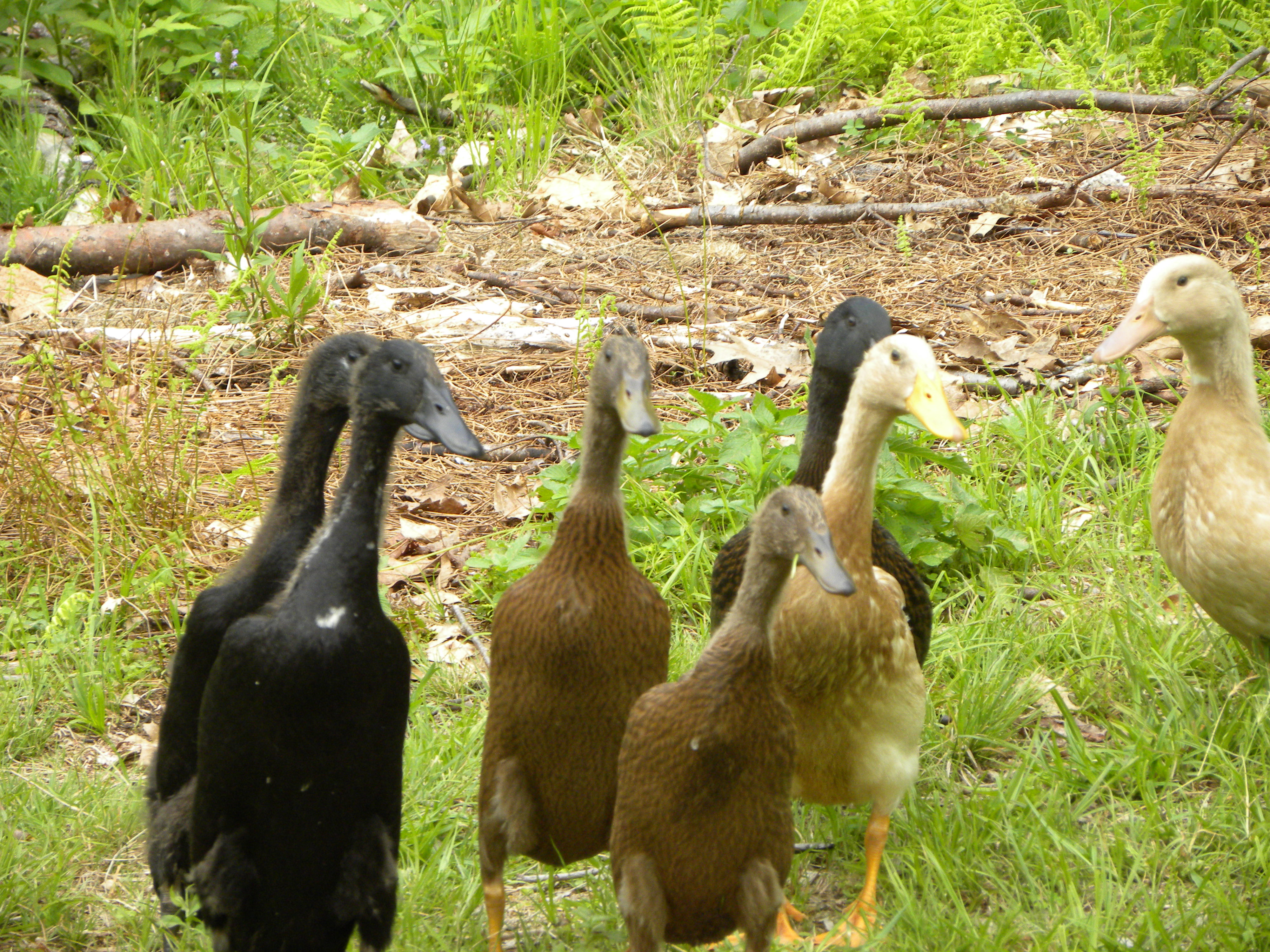I last wrote about a very appreciated and loved creature – the honey bee. Next up I want to tell you about a weird, wild, often reviled beastie – the slug!
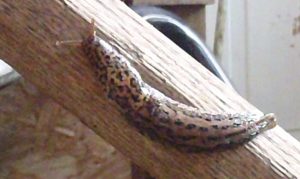
Leopard Slug (Limax maximus)
Any gardener is going to have a fraught relationship with slugs, especially after a wet spring like we had. But before we get to that, let’s get to know them better.
As with any problem we face, permaculture asks us to observe first, to learn and understand what we can. This enables us to make better choices about how we react, sometimes even allowing us to turn our problems into solutions.
Aside from that, every creature we share this planet with is amazing and worth marveling at just to keep our sense of awe and humility intact.
My Slug Story
When I first noticed slugs, they were not a problem for me. I was living in Dover NH in a house with a tiny fenced in backyard. One summer we noticed that in the right light all the patio bricks sparkled. It looked like fairies had sprinkled their dust… but it was actually the dried slime from the trails of slugs which we were having an outbreak of! At night they would appear and we started watching them.
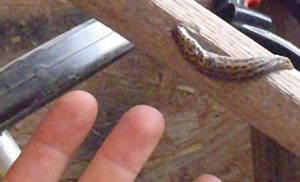
Not a Small Slug!
They were big – maybe 3 inches long fully extended, and I couldn’t believe how fast they moved given that they have no legs. I wasn’t trying to garden back then, so could simply watch and admire and not get into any kind of battle with the slimy critters.
Around the same time the movie Microcosmos came out. I saw it on the big screen of The Music Hall in Portsmouth. This artistic documentary about life in meadows and ponds included an amazing mating dance of snails.
A few years later my best friend, Nicole, moved to California. We did some traveling in the state and I loved the northern woods with the huge majestic redwoods, shocking to a New Englander. Those woods held black bears to be wary of, herds of Roosevelt Elk, and banana slugs, which everyone wanted to see with their intense yellow coloring standing out against the browns and greens of the forest.
Slugs Are Cool
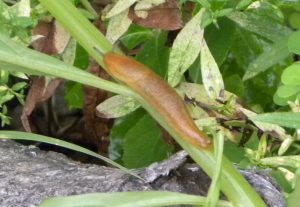
Slug in the Garden
Why respect slugs? The role slugs play in the ecosystem is to eat decaying plant, fungi and sometimes even animal matter. They are recyclers who fit well into the No Such Thing As Waste permaculture view.
Slugs and snails (scientifically classified as “gastropods“) have been on this planet since the Cambrian era (497 million years ago!) – clearly they are successful and important. Thousands of species live in all kinds of habitats (sea, forest, desert, pond, ditch,…), with different eating habits (herbivore, carnivore, detritivore), and such a diverse genetic heritage that we know they didn’t all evolve from one ancestor, but arose independently a number of times in different places.
The Problem
However, they can be serious garden pests, and they also can spread some diseases. In our case, the one we most worry about affects goats – meningeal worm.
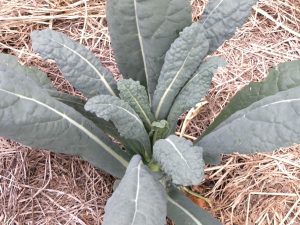
Young Kale Plant, Vulnerable to Slug Damage
My relationship with slugs became strained when we first started gardening here on our Living Land property. We’d gotten some land cleared, sheet mulched, and I planted garlic in the fall. That spring it came up, and I started planting other crops. I quickly discovered that we had a tremendous slug population. Sure, they were eating my lettuce, kale & broccoli, but also my onions and garlic! I would go into the garden with a quart container and fill it with slugs within about 20 minutes. Yes, I handpicked them, despite the slime factor.
I consulted soil experts. For many pests, it is a soil problem that causes distress in the plant which then attracts predatory insects. But, not with slugs I was told. They weren’t indicative of a deeper problem, but simply liked to eat what humans do too.
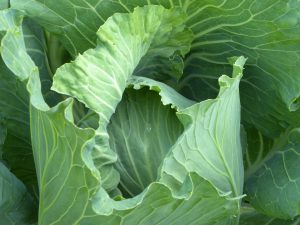
Cabbage, A Favorite Food of Slugs
I brought my containers of slugs to our chickens. We had friends whose hens enjoyed these protein rich treats. But, alas, ours had more refined taste, I guess. They looked at the slugs, looked at me, ruffled their feathers and strutted away.
So, we needed other control methods.
The Solution
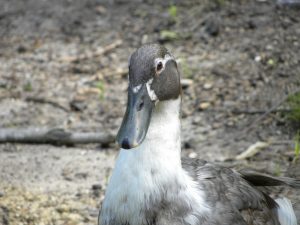
Indian Runner, From Our First Flock
Of course, permaculturist Bill Mollison‘s famous quote came back to me: “You don’t have a slug problem, you have a duck deficiency” which he said to another struggling gardener.
We followed his advice, and got ourselves some ducks. They were not as easy to procure as chicks can be, but we found Indian Runner ducklings locally. There were just a few of them, but, wow, did they love to eat slugs! Before they were big enough to be outside we brought them in for them and they gobbled them up. That first year, we let them spend time in the garden itself. They are not as hard on a garden as chickens are, but they made a bit of a mess of my carefully placed mulch. Since then, we rarely let them in the garden, but they have access to a large area around it. That has been enough to keep the problem in check.
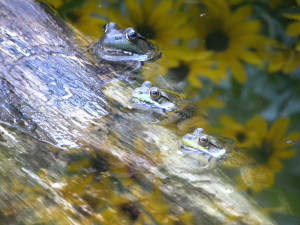
Frogs in Our Pond
We also added elements to our garden and land that support wild predators of slugs: frogs, toads, and snakes. (If you can’t or don’t want to keep ducks, this is what I’d suggest you focus on.) We added a pond form in the garden and within weeks it was full of frogs.
Now that we aren’t overrun with them, I can again admire slugs as amazing creatures. In fact, as the slug population has decreased, our duck food bill has gone up… I now look at them as a resource not just a competitor.
We love our ducks. They are extremely entertaining, give us amazing eggs, and a small amount of meat. They have an important place here and we’re grateful to have turned our slug problem into such a great duck solution!
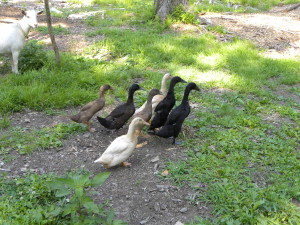
A “Brace” of Ducks

